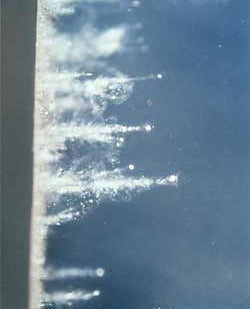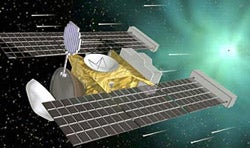Researchers at the University of California, Berkeley, have launched Stardust@home to enlist amateur astronomers in the hunt for specks of interstellar dust captured by NASA’s Stardust spacecraft. The project calls upon the public to help scrutinize the 1.5 million microscopic views expected to be imaged from the craft’s payload, which is slated to parachute into Utah’s Salt Lake Desert this Sunday.
“It’s an idea that was born out of desperation,” says Andrew Westphal, associate director of the university’s Space Sciences Laboratory, who developed the technique NASA will use to create the digital images.
Programming a computer to analyze the digital images doesn’t make sense either because the team couldn’t predict how the gel would appear after its 7-year mission onboard the spacecraft. A computer could confuse cracks or other artifacts in the gel for tracks left behind by the grains as they zoomed into the material.
Westphal works down the hall from the SETI@home people, so it didn’t take long for a light bulb to turn on. Unlike the SETI@home project, however, which draws on the processing power of idle computers connected to the Internet, Stardust@home requires the sharp attention of detail-oriented people.
Because the search is so hands-on, Westphal is asking volunteers to pass a dust-finding test before they’re invited to help. After studying examples of magnified views of dust tracks created in laboratory experiments, the volunteer views 10 images. He or she must identify the tracks correctly on no fewer than eight of the images before being allowed to register in the program.
The new program was launched as a web site January 11, and more than 10,000 volunteers have already requested to participate. Data examination will begin in mid-March. Westphal believes it will take 30,000-person hours to accomplish the goal, but he hopes they’ll achieve the first sighting within the first month.











